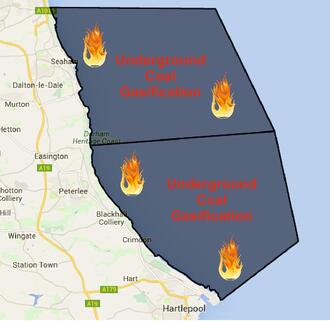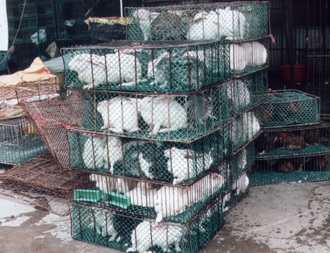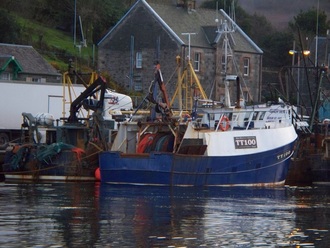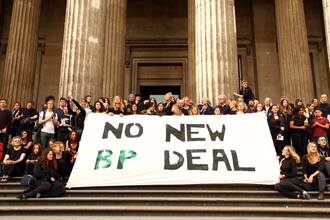-
PROTECT THE NORTHEAST COASTLINEWith Five Quarters nolonger in operation there is only Cluff Natural Resources with licences who want use the North East as a testbed for undersea coal gasification (UCG), an experimental method of squeezing out the remaining drops of coal. They have received licences to test down the NE coast from Seaham to Hartlepool In Australia linc energy UCG wells were found to leak the same substances to groundwater as can be released by fracking resulting in a 320km zone be made around the plant. There are dangers of blowbacks and explosions. Many test have failed. It has never been used on a commercial basis. The gas produced is syngas or coal gas. It is a mixture of methane (natural gas), carbon monoxide, carbon dioxide and hydrogen. They plan to pump it back into the hole they have made using Carbon Capture and Storage (CCS). This is another process that has not been fully tested. Surely it would be better to use renewables and not produce the CO2 in the first place? There is of course the carrot of job creation. Any jobs created by UCG/fracking will be highly specialised. However, if the same amounts of money were to be invested in renewable energies and/or home and public building insulation, which the public have been shown to prefer as the majority of surveys have shown. There would be far more new jobs and far fewer environmental concern's. For more information see Frackfreehartlepool.co.uk492 of 500 SignaturesCreated by David Spence
-
SAVE OUR NATURE RESERVE-BABBS MILLThis is a nature reserve and contains an array of wildlife that will be affected as a consequence of building on the green land.34 of 100 SignaturesCreated by Akan Asante
-
Genetically Modified FoodWe can make a choice whether we wish to eat this food or not. We currently have no idea of the long term effects of this type of process8 of 100 SignaturesCreated by Paulette Walker
-
Save Hilperton GapHilperton Marsh [aka the Gap] is a flood plain and building over 200 houses risks increasing the risk of flooding for homes and businesses in the area and overloading the current water courses and drains. What's more it's a beautiful open area of green fields, historically dividing the village of Hilperton from the town. It is an easily accessible area used by both local residents and people from other areas for recreation and to enhance the quality of life for both young and old. Trees and hedges that support wildlife including bats, owls and kingfishers will be felled. The Hilperton relief road which has been built across the centre of the Gap is now being used as an excuse to build on the land - not the purpose that it was constructed for. Both Councillors for this area are opposed to these plans. One Councillor, Cllr Steve Oldrieve said: " The whole of the Hilperton Gap is vital to the well-being of our community and we cannot allow unwanted piece-meal speculative housing developments to destroy it." It's time to stand up to Save the Hilperton Gap. If enough of us support this petition it will put pressure on Wiltshire Council to refuse planning permission and consider alternatives to protect this land for future generations.1,490 of 2,000 SignaturesCreated by Mel Godber
-
Frack Free Cheshire EastGeorge, real people are struggling to deal with the effects of fracking in communities all over the world. From contaminated water that is unsafe to drink, wash and bathe in, through to the effects of poor air quality on health, damage to local economies through to the loss of tourism and agriculture and the decimation of areas of outstanding beauty and scientific interest. Here is a video link you might care to watch https://www.youtube.com/watch?v=V3K0kV7UcME. Fracking requires large numbers of wells (usually 8 per square mile), huge quantities of water that will be forever poisoned, and industrial development of the English countryside on an unprecedented scale whilst causing and not preventing a rise in greenhouse gases (shale gas and oil are fossil fuels and so emit greenhouse gases - did you know?). George you have scrapped the Green Charter at a time when many of our European cousins are investing heavily in green technologies, making huge innovative strides in solar and other renewable technology and banning fracking because of its inherent risks and dangers. Still more countries have extended temporary bans due to their concerns, to allow more time to thoroughly assess the dangers. Others that have already suffered the negative consequences of fracking are now taking measures to prevent further fracking. Oh and by the way - I can see no evidence that fracking will drive prices down at home here in the UK. There is no guarantee that gas fracked in this country would be used here. We, as you well know, are part of a free market economy so gas will be sold wherever it will generate the largest profits. Those profits will go back to the corporates and their shareholders, not our economy unless, of course, we manage to close all those pesky off shore loop holes by the time those profits are made (Starbucks anyone?). Meanwhile with oil prices scraping the bottom of the proverbial barrel and the price of solar electricity falling fast, the likes of Citibank say big power stations could be redundant in 10 - 20 years’ time! What then will happen to the wells George? Who will be responsible for their upkeep and/or decommissioning and at what cost environmentally and economically?. Where will the contaminated water go? Perhaps you are hoping it will just seep neatly away into the cracks caused by fracking (along with the other 60% of water that 'goes missing' during the fracking process), that is assuming that the wells are even up and running by this deadline. Me? I like my water fresh from the tap, preferably uncontaminated. Fracking has the very real potential to adversely affect the food we eat, the water we drink, the air we breathe and the ground we walk on (remember the earthquakes George, that Cuadrilla admitted to causing?). Therefore we, the undersigned, request an immediate cessation to this Government's pro-fracking policies and any pro-fracking activity currently taking place until a thorough INDEPENDENT, cross party, scientific analysis and review has taken place with any research and conclusions reached made transparent and fully available to the public. We thank you for your earliest attention in this matter.152 of 200 SignaturesCreated by Nicola Wilson
-
Ban the use of air fresheners in public placesThe use of air fresheners in public spaces has become increasingly widespread. The health of the general public has been overlooked and it has become almost impossible to avoid contact with air fresheners and indoor pollutants as we go about our daily lives. Air fresheners have a detrimental affect on health, particularly on those suffering from migraine, asthma, respiratory problems and allergy. Around 5.4 million people in the UK are currently receiving treatment for asthma including 1.1 million children. Please join this campaign to help improve public awareness and urge the UK government, local councils and businesses to take action to safeguard public health.904 of 1,000 SignaturesCreated by Annali Lowdon
-
Support the Heathrow 13 and stop the new runway!13 climate protesters are facing prison to silence protest against new runways which would wreck Government policy to protect us from catastrophic climate change. The Paris agreement underlines the need to cut emissions now. Aviation is the fastest growing source of carbon emissions and the only way to reduce emissions from aviation to a safe level is to reduce the number of flights. Despite David Cameron’s ‘no ifs, no buts’ election and manifesto promise to not build a new runway following massive public outrage at the proposals, the Government is now breaking its promise. There is more than enough aviation capacity for people’s annual holidays and the declining number of business flights. Airport growth is driven by a minority of frequent fliers who take the majority of UK flights to second homes and tax havens. Meanwhile, emissions from aviation are destroying people’s lives. People in the Heathrow area, who already have to breathe illegal levels of air pollution and suffer intolerable noise, would now see their homes destroyed. People across the UK have been flooded at Christmas, and every year hundreds of thousands more people die due to climate change - mostly in poor countries in the Global South, the people least responsible for emissions. The Government is expected to make its decision on whether to expand Heathrow or Gatwick – or neither, if we are successful – this year. It’s one or the other: build new runways or protect us from climate chaos. The people in the Global South who are dying due to climate change already have no voice in the debate. We can show them that jailing peaceful protesters will not silence those of us who do.657 of 800 SignaturesCreated by Plane Stupid
-
Mark Spencer MP: Say NO to lobbyists & back a ban on driven grouse shootingMark Spencer MP recently received a free game bird shooting weekend courtesy of lobbying group British Association for Shooting and Conservation (BASC). We are, in turn, asking our MP to stop accepting gifts from shooting lobbyists and from now on support a ban on the damaging practice of driven grouse shooting. There are many very good reasons for banning driven grouse shooting: -Government subsidies support this practice (at a time when everywhere else is feeling the brunt of cuts: why aren't millionaire landowners?); -the illegal killing of grouse predators (especially the hen harrier, which is now almost extinct in England due to persecution on grouse moors); -grouse moors are extensively 'managed' in such a way that causes far higher flood risks downriver; -increased water pollution (which inflates our water bills- there is evidence that bills would be cheaper if the rich man's driven grouse shooting was banned); -increased greenhouse gas emissions due to the practice of burning the moors to keep a habitat that boosts grouse numbers; -millions of birds are killed each year.181 of 200 SignaturesCreated by Richard Bissett
-
Ban the UK import of farmed furIn 2000 the UK banned all fur farming, to prevent animal cruelty. However the law does not prevent the import of real fur. There is no legal provision to make suppliers declare whether their products are made with real or fake fur. Real fur from abroad is now common in high street clothing shops. To send a message to our overseas business partners that the UK does not tolerate the cruel methods of fur farming; we need a law that bans the import of all real farmed fur, and which puts the onus on importers to prove that any fur they use is fake, vintage or taken from free-range animals that died of old age.174 of 200 SignaturesCreated by Derek Starkswood
-
A Vote of No Confidence in Richard LochheadThat we the Fisherman and Farmers of Scotland have No Confidence in Richard Lochhead to stand and fight for our industries that are an important part of our rural economy, an important export earner for Scotland and vital to our food security391 of 400 SignaturesCreated by john macdougall
-
No to fracking in Altrincham and Trafford!Much of this borough is semi rural. We do not want to see our green spaces industrialised with up to 8 wells per square mile. Our roads are congested enough without the massive increase in heavy traffic these developments would cause. Fracking can potentially lead to serious or widespread pollution of our water supplies. And there is the risk of air pollution too. High-profile doctors, pharmacists and public health academics want fracking banned! We do not want these risks near our homes and schools! It could reduce the value of our homes! We do not want to risk negative equity and losing the value of our hard work! We already risk dangerous climate change by the burning of just a fraction of the fossil fuels that we have found! Just what is the point of destroying our environment just to look for more? If we stick to the goals to limit global warming to 2degrees, we will never be able to burn shale gas!172 of 200 SignaturesCreated by Jane Katz
-
Call on the Scottish National Portrait Gallery to cut ties with BP!We, the undersigned, care deeply about the arts, and equally the natural environment and the rights of humans around the world. We believe arts and cultural institutions should break their ties with oil companies such as BP, a company which has caused repeated environmental catastrophes, including the Deepwater Horizon spill, and been implicated in numerous human rights violations. Furthermore, BP is turning a profit on the continued extraction of dirty fossil fuels, pushing us towards runaway climate change, whilst lobbying against environmental laws and clean energy alternatives [1, 2]. By accepting sponsorship from BP, cultural institutions give the oil giant much-needed positive publicity, and help it to obscure the destructive reality of its activities with a veneer of respectability. At the same time, oil sponsorship taints the reputation of the institutions that accept it. We recognise the vital importance of arts funding, particularly after public funding cuts. However BP sponsorship provides less than 1% of the annual income of the British Museum, Tate, and Royal Opera House, and just 3% of the income of the National Portrait Gallery [3], yet BP are allowed to place their name and logo alongside the names of these institutions, on their website and in exhibitions (despite many artists and arts workers having strong views against such branding) [4, 5]. BP needs these institutions far more than they need BP. This is the 26th year that BP has sponsored the Portrait Awards, through an agreement with the National Portait Gallery (NPG) in London. Fortunately this agreement is due to end this year. The NPG could choose not to renew the agreement, and to find a more appropriate sponsor for the Portrait Awards. However, negotiations about renewal are already underway. The NPG will not drop BP as a sponsor without strong pressure from the public and the arts sector. We need to act now. Over its 26 years of sponsorship, BP has repeatedly caused great harms to the environment and people; it has been responsible for multiple deadly explosions and oil spillages, including that of Deepwater Horizon, which killed 11 people, decimated ecosystems and livelihoods in the Gulf of Mexico, and resulted in the largest corporate fine in history [6]. It has traded with oppressive regimes from Azerbaijan to Libya, and has even been implicated in torture in Colombia [7]. It has recently expanded into tar sands, an extreme form of energy production which contaminates water and tramples on indigenous rights [8]. Worldwide, fossil fuel companies have currently laid claim to five times the volume of oil, gas and coal that humanity can burn without causing dangerous and destructive levels of global warming [9] - despite this, BP has stated that it will continue to explore and exploit new reserves of oil and gas into the future. In 1989, the National Portrait Gallery ended its eight-year Portrait Award sponsorship agreement with tobacco company John Player [10]. It is time for this national cultural institution to show such moral leadership and forward-thinking once again, by cutting ties with BP. As a partner of the National Portrait Gallery, the Scottish National Portrait Gallery can influence this decision. We call on this respected national cultural institution to put pressure on the NPG to find a more appropriate sponsor, and to refuse to host the BP Portrait Awards until a new sponsor has been found. For more information, please see: http://bp-or-not-bp.org/ http://bp-or-not-bp.org/scotland http://platformlondon.org/p-publications/picturethis/ References 1. http://www.theguardian.com/business/2010/may/02/bp-deepwater-horizon-oil-spills 2. http://www.theguardian.com/environment/2015/sep/21/bp-tops-the-list-of-firms-obstructing-climate-action-in-europe 3. http://platformlondon.org/p-publications/artoilinfographic/ 4. http://fossilfundsfree.org/who/ 5. http://www.theguardian.com/artanddesign/2014/jun/24/no-oil-painting-bp-sponsorship-npg-portrait-award 6. http://www.theguardian.com/environment/2015/jul/02/bp-will-pay-largest-environmental-fine-in-us-history-for-gulf-oil-spill 7. http://www.theguardian.com/world/2015/may/22/gilberto-torres-survived-colombias-death-squads-now-he-wants-justice 8. http://environmentaldefence.ca/reports/canadas-toxic-tar-sands-most-destructive-project-earth 9. http://www.rollingstone.com/politics/news/global-warmings-terrifying-new-math-20120719 10. http://platformlondon.org/p-publications/picturethis/ 11. http://www.scientificamerican.com/article/climate-risks-as-conclusive-as-link-between-smoking-and-lung-cancer/176 of 200 SignaturesCreated by Claire Robertson
Hello! We use cookies to improve your experience by providing insights into how the site is being used. Find out more.












